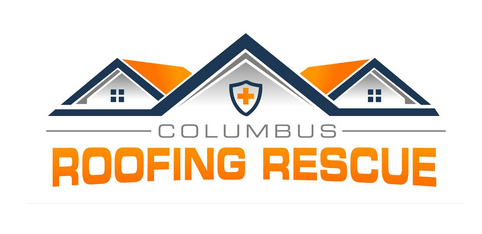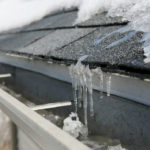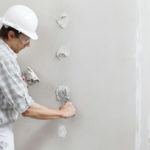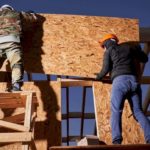
How To Inspect A Roof For Storm Damage
Are you worried about the potential damage that storms can cause to your roof? Whether it’s heavy rain, strong winds, or hailstorms, your roof is your home’s first line of defense. That’s why it’s crucial to inspect your roof for any signs of storm damage regularly.
In this ultimate guide, we will walk you through the step-by-step process of inspecting your roof, identifying common types of storm damage, and taking necessary measures to protect your home. From checking for loose or missing shingles to examining your gutters and downspouts, we will provide expert tips and insights to ensure your roof remains intact and your home stays safe.
Don’t let storm damage catch you off guard – arm yourself with the knowledge and tools to safeguard your most valuable asset. Let’s dive into this comprehensive guide and take control of your roof’s well-being.
The Importance of Inspecting Your Roof for Storm Damage
Your roof is one of the most vulnerable parts of your home regarding storm damage. Strong winds can lift and loosen shingles, hailstorms can cause dents and cracks, and heavy rain can lead to leaks and water damage. If left unchecked, these issues can escalate and result in costly repairs or even compromise the structural integrity of your home. That’s why inspecting your roof after every storm or at least once a year to catch any damage early on is essential.
Regular roof inspections can help you promptly identify and address storm damage, preventing further deterioration and protecting your home. Documenting any damage you find will be crucial when filing an insurance claim. By taking the time to inspect your roof, you are taking proactive steps to ensure the longevity and safety of your home.
Signs of Storm Damage on Your Roof

Before you start your roof inspection, it’s essential to know what signs of storm damage to look out for. Here are some common indicators that your roof may have been damaged during a storm:
Missing or Loose Shingles: Strong winds can dislodge shingles or even tear them off completely. If you notice any gaps or missing shingles on your roof, it’s a clear sign of storm damage.
Damaged Flashing: Flashing is the metal or rubber material installed around chimneys, vents, and skylights to prevent water leakage. Storms can cause flashing to become loose or damaged, leading to water seeping into your home.
Cracked or Dented Shingles: Hailstorms can cause shingles to crack or dent. Inspect your roof for any signs of impact damage, such as circular cracks or small dents on the shingles.
Water Stains or Leaks: Look for water stains on your ceiling or walls, as these can indicate a leak in your roof. Water stains are often yellow or brown in color and may be accompanied by a musty odor.
Gutter Damage: Strong winds and heavy rain can cause gutters to detach or become clogged with debris. Inspect your gutters for any signs of damage or blockage, as they play a vital role in diverting water away from your roof.
By knowing these signs of storm damage, you’ll be better equipped to identify any issues during your roof inspection.
Steps to Inspecting Your Roof for Storm Damage

Inspecting your roof for storm damage may seem daunting, but by following a systematic approach, you can ensure a thorough examination. Here are the steps to inspecting your roof after a storm:
Safety First: Ensure you have the necessary equipment before climbing onto your roof. Use a sturdy ladder, wear non-slip shoes, and consider using a safety harness. If you’re uncomfortable with heights or performing the inspection yourself, hiring a professional roofing contractor is best.
Exterior Inspection: Start by walking around the perimeter of your home and visually inspecting the roof from ground level. Look for any obvious signs of damage, such as missing or loose shingles, sagging areas, or debris.
Inspect the Shingles: Carefully climb onto your roof and inspect the shingles up close. Look for any signs of damage, such as cracks, dents, or curling edges. Pay close attention to the areas where shingles overlap, as these are more susceptible to wind damage.
Check the Flashing: Examine the flashing around chimneys, vents, and skylights. Ensure that it is securely in place and free from any damage. Look for signs of rust, corrosion, or gaps that could indicate water penetration.
Inspect the Gutters and Downspouts: Clean out any debris from your gutters and downspouts and check for any signs of damage. Look for loose or detached gutters, bent sections, or clogs that could prevent proper water drainage.
Interior Inspection: Once you’ve inspected the exterior, it’s essential to also check for any signs of damage inside your home. Look for water stains on the ceiling or walls, mold growth, or a musty odor. These could indicate a leak in your roof.
By following these steps, you can conduct a thorough inspection of your roof and identify any storm damage that needs to be addressed.
Necessary Tools and Equipment for the Inspection

To perform a proper roof inspection, you’ll need a few essential tools and equipment. Here’s a list of what you’ll need:
Ladder: A sturdy ladder is crucial for accessing your roof safely. Ensure that it is in good condition and securely positioned before climbing up.
Safety Equipment: Wear non-slip shoes or boots with good traction to prevent slipping. Consider using a safety harness for added protection, especially if you’re uncomfortable with heights.
Binoculars: Binoculars can be helpful for inspecting your roof from the ground, especially if you have a steep or high roof. They allow you to get a closer look at any potential damage without having to climb up.
Work Gloves: Protect your hands by wearing work gloves when inspecting your roof. They will not only provide grip but also protect you from any sharp edges or debris.
Flashlight: A flashlight will come in handy if you need to inspect your attic or any dark areas of your roof. It will help you spot any signs of water damage or leaks.
By having these tools and equipment on hand, you’ll be well-prepared to conduct a thorough roof inspection and ensure your safety during the process.
Safety Precautions During Roof Inspections
Inspecting your roof can be risky, especially if you’re not accustomed to working at heights. It’s essential to prioritize safety and take the necessary precautions to prevent accidents or injuries. Here are some safety tips to keep in mind during your roof inspection:
Use a Sturdy Ladder: Ensure your ladder is in good condition, positioned on a stable surface, and securely leaning against the roof. Always maintain three points of contact when climbing the ladder.
Wear Appropriate Safety Gear: Wear non-slip shoes or boots with good traction to prevent slipping. Consider using a safety harness for added protection, especially if you’re uncomfortable with heights.
Buddy System: If possible, have someone nearby inspect your roof. They can assist you in an emergency or call for help if needed.
Watch the Weather: Choose a day with calm weather conditions for your roof inspection. Avoid inspecting your roof during storms, high winds, or when it’s wet or icy, as it can be hazardous.
Stay Alert and Mindful: Be aware of your surroundings and focus on the task. Avoid distractions and take breaks if you start to feel fatigued.
Following these safety precautions can minimize the risks associated with roof inspections and ensure a safe and successful inspection process.
How to Document and Report Storm Damage to Your Insurance Company
If you discover any storm damage during your roof inspection, it’s crucial to document and report it to your insurance company. Here’s how to go about it:
Take Detailed Photos: Use a camera or smartphone to take clear, detailed photos of the storm damage. Capture the overall condition of your roof and close-up shots of any specific damage you find.
Make Notes: Write down any observations or additional information about the damage. Note the date and time of the storm, the severity of the weather conditions, and any other relevant details.
Contact Your Insurance Company: Reach out to your insurance company immediately to report the storm damage. Please provide them with your gathered documentation, including your photos and notes.
Schedule an Adjuster Visit: Your insurance company will likely send an adjuster to assess the damage and determine the coverage for repairs or replacements. Arrange a date and time that works for both parties.
Cooperate with the Insurance Adjuster: During the adjuster visit, provide them with the documentation you’ve gathered and answer any questions they may have. Be honest and thorough in your communication.
Keep Copies of all Documentation: Make copies of all documentation related to the storm damage and your insurance claim. Keep them in a safe and easily accessible place for future reference.
By documenting and reporting the storm damage promptly, you increase your chances of receiving the necessary coverage from your insurance company.
Temporary Roof Repairs to Prevent Further Damage
If you discover storm damage on your roof, it’s important to take immediate action to prevent further damage. While it’s best to hire a professional roofing contractor for permanent repairs, there are some temporary measures you can take in the meantime. Here are a few temporary roof repairs to consider:
Covering with Tarps: If you have missing or damaged shingles, cover the affected areas with tarps or plastic sheeting. Secure them tightly to prevent water from leaking into your home.
Patching Holes and Cracks: Use roof cement or roofing sealant to temporarily patch any holes or cracks in your roof. Apply the sealant generously, ensuring it covers the damaged area completely.
Clearing Debris: Remove debris or fallen branches from your roof and gutters. Clearing the area will prevent blockages and ensure proper water drainage.
Securing Loose Flashing: If your flashing is loose or damaged, use roofing nails or screws to secure it back in place. Ensure that it is tightly sealed to prevent water penetration.
Remember, these temporary repairs are only meant to provide short-term protection. Contacting a professional roofing contractor to assess the damage and perform the necessary repairs or replacements is crucial.
Hiring a Professional Roofing Contractor for Repairs
While temporary repairs can help mitigate immediate damage, hiring a professional roofing contractor for permanent repairs is important. Here’s why:
Expertise and Experience: Professional roofing contractors have the knowledge, expertise, and experience to assess and repair storm damage accurately. They are familiar with industry standards and best practices, ensuring a high-quality repair job.
Safety: Roof repairs can be dangerous, mainly if you’re not accustomed to working at heights. Professional contractors have the necessary safety equipment and training to perform repairs safely.
Quality Materials: Professional contractors can access high-quality roofing materials that may not be readily available to homeowners. They can recommend and install the best materials for your needs, ensuring long-lasting repairs.
Warranty and Insurance: Reputable roofing contractors often provide warranties on their workmanship and use materials that come with manufacturer warranties. This offers you peace of mind and protection in case of future issues.
When hiring a roofing contractor, research and choose a licensed and insured professional with a good reputation. Obtain multiple quotes, ask for references, and ensure the contractor has experience handling storm damage repairs.
Preventative Measures to Protect Your Home from Future Storms
While it’s impossible to prevent storms from occurring, there are some preventative measures you can take to protect your home from future damage. Here are a few tips:
Trim Trees and Branches: Trim any overhanging tree branches that could fall onto your roof during a storm. This will reduce the risk of damage caused by falling debris.
Clean and Maintain Gutters: Regularly clean out your gutters and downspouts to prevent blockages and ensure proper water drainage. Consider installing gutter guards to prevent debris buildup.
Check and Reinforce Flashing: Inspect the flashing around chimneys, vents, and skylights regularly. Ensure that it is securely in place and free from any damage. Reinforce it if necessary.
Inspect and Maintain Shingles: Regularly inspect your shingles for signs of wear or damage. Replace any missing or damaged shingles promptly to prevent water leakage.
Consider Impact-Resistant Roofing Materials: If you live in an area prone to hailstorms, consider investing in impact-resistant roofing materials. These materials are designed to withstand hail and minimize damage.
Regular Roof Maintenance: Schedule regular roof maintenance with a professional roofing contractor. They can identify and address any potential issues before they escalate.
Taking these preventative measures can minimize the risk of storm damage and protect your home from costly repairs.
Conclusion: The Importance of Regular Roof Inspections and Maintenance for Protecting Your Home
Regularly inspecting your roof for storm damage is crucial for protecting your home and ensuring its longevity. Proactively identifying any issues early on can prevent further damage and costly repairs. Remember to follow the necessary safety precautions, document any storm damage, and promptly report it to your insurance company. While temporary repairs can provide short-term protection, it’s best to hire a professional roofing contractor for permanent repairs. Lastly, take preventative measures to protect your home from future storms and schedule regular roof maintenance.
By taking these steps, you’ll have peace of mind knowing that your home is well-protected against storm damage. Remember, a little prevention goes a long way when safeguarding your most valuable asset – your home.



